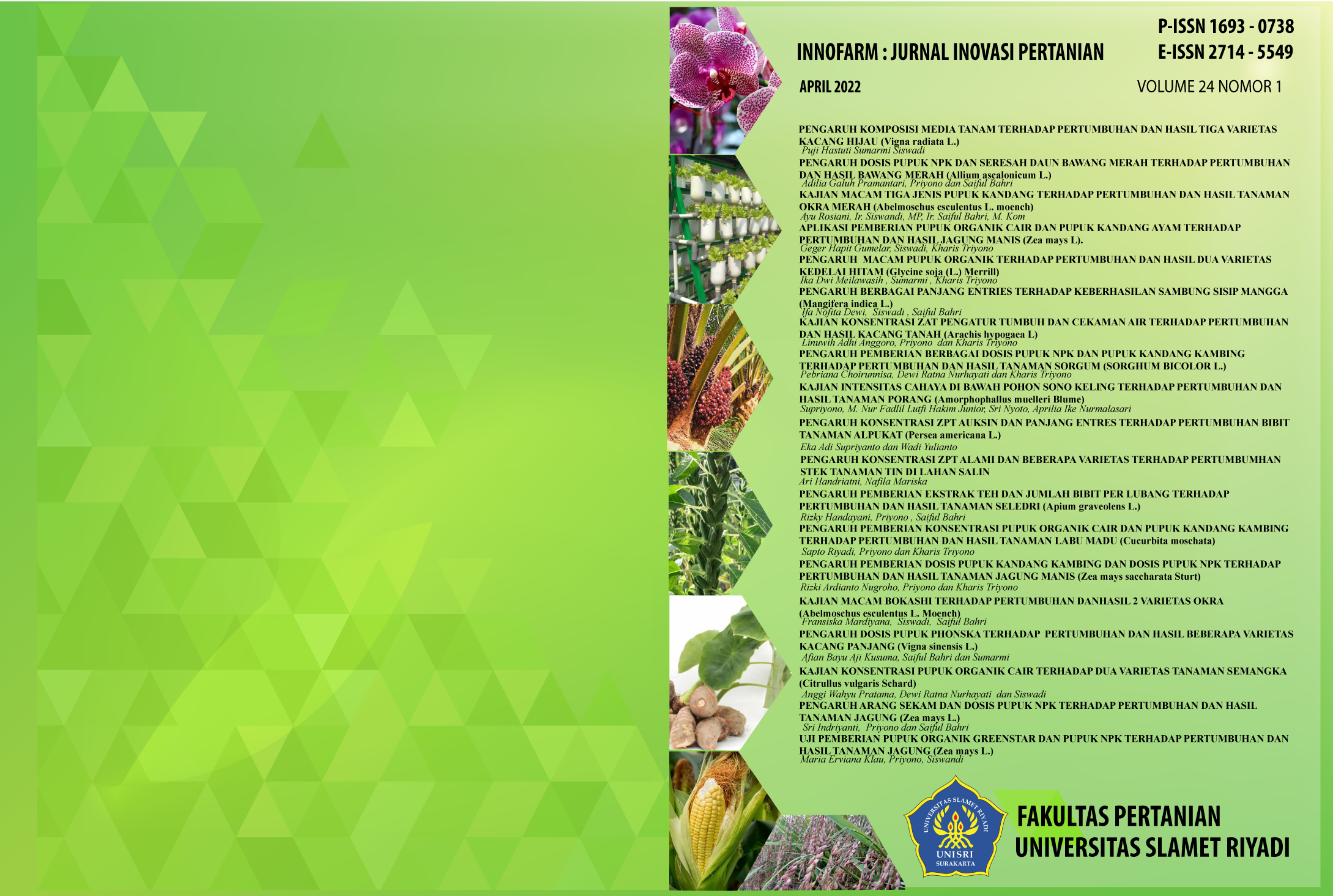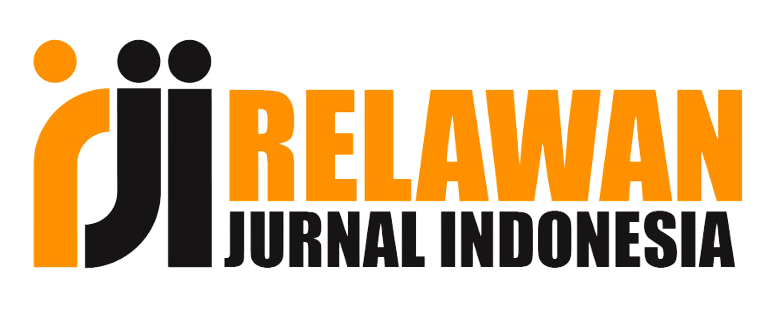A KAJIAN INTENSITAS CAHAYA DI BAWAH POHON SONO KELING TERHADAP PERTUMBUHAN DAN HASIL TANAMAN PORANG (Amorphophallus muelleri Blume)
KAJIAN INTENSITAS CAHAYA DI BAWAH POHON SONO KELING TERHADAP PERTUMBUHAN DAN HASIL TANAMAN PORANG (Amorphophallus muelleri Blume)
DOI:
https://doi.org/10.33061/innofarm.v24i1.6625Keywords:
Agroforestry, intercropping, land expansionAbstract
Porang (Amorphophallus muelleri Blume) is a plant that produces tubers and is widely found in various parts of Indonesia such as Central Java, East Java and East Nusa Tenggara. Porang is used to make glue, food and cosmetics. The high demand for porang requires intensification and expansion of the area to be carried out. The target of land expansion is marginal land, as well as intercropping on forest land or by agroforestry. Appropriate light intensity can increase plant growth and yield. The research was carried out from March to July 2020 in the Perum Perhutani BKPH Pojok, in sonokeling(Dalbergia latifolia) forest, Kemadoh Batur Village, Tawangharjo in Grobogan district. This one factor study used a Randomized Completely Block Design (RCBD) with 4 levels. The treatment factors were light intensity due to shade by sonokeling : (P1) 100% light intensity, (P2) 75-90% light intensity, (P3) 50-74% shading intensity, and (P4) 25-49% light intensity. Each treatment was repeated 6 times, each experimental unit consisted of 3 plants. Data were analyzed using 5% variance test and continued with 5% DMR test if there was a significant difference. Up to 25-49% the light intensity of the sonokeling shade does not affect the growth and yield of porang plants.
Downloads
Published
Issue
Section
License
Copyright (c) 2022 Supriyono Supriyono

This work is licensed under a Creative Commons Attribution-NonCommercial 4.0 International License.
Authors who publish this journal agree to the following terms:
- Authors retain copyright and grant the journal right of first publication with the work simultaneously licensed under a Creative Commons Attribution License that allows others to share the work with an acknowledgement of the work's authorship and initial publication in this journal.
- Authors can separately make additional contractual arrangements for non-exclusive distribution published by the journal (e.g., publish it in a book), with an acknowledgement of its initial publication in this journal.
- Authors are allowed and encouraged to send their work via online (e.g., in the institutional repositories or their website) after published by the journal.


















